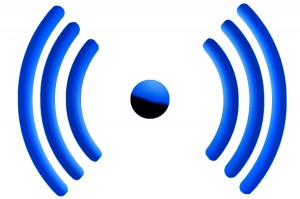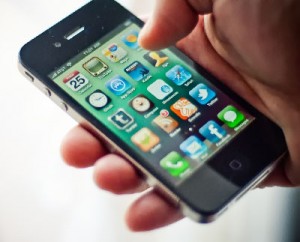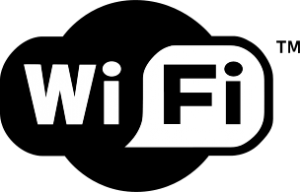What follows is a phone conversation between me and a representative of the GremlinBusters (GB), a company whose technicians combine the expertise and  knowledge of Time Warner Cable, Netflix, Apple TV, and all things unfathomable to one of my generation:
knowledge of Time Warner Cable, Netflix, Apple TV, and all things unfathomable to one of my generation:
GB: “So, Mr. McIntosh, tell me about the problems you’re having with Netflix streaming over Apple TV.”
TM: “It’s like someone else has control of the remote. He’ll hit pause for no reason. Or fast forward. Last night he kept muting the sound. If I could see the jerk, I’d shoot him, but he’s like an invisible gremlin.”
GB: “Well, you’ve come to the right place, Mr. McIntosh. For five-hundred bucks, I can take care of that for you.”
GB: “That includes tax.”
TM: “It better include a four-hundred-dollar instant rebate. Are you out of your mind?”
GB: “This is an intricate operation, sir. And dangerous. We’ve had to invest in very expensive equipment and train for months to do this safely.”
TM: [Insert sounds of laughter here] “Okay, you’ve got one minute to tell me what you do and why I shouldn’t hang up right now.”
 GB: “In order to provide you with the flawless streaming you deserve, we have to evaluate all the possible sources of trouble. From Netflix through the Time Warner Cable system to your router upstairs to the Apple TV downstairs to your TV and receiver. And we’ve already done that–”
GB: “In order to provide you with the flawless streaming you deserve, we have to evaluate all the possible sources of trouble. From Netflix through the Time Warner Cable system to your router upstairs to the Apple TV downstairs to your TV and receiver. And we’ve already done that–”
TM: “Hold on a second. You’ve what?”
 GB: “We’ve evaluated all that from here, Mr. McIntosh. That’s the easy part.”
GB: “We’ve evaluated all that from here, Mr. McIntosh. That’s the easy part.”
TM: “You came into my house without me knowing about it?”
 GB: “In a manner of speaking, yes.”
GB: “In a manner of speaking, yes.”
TM: “Do me a favor and speak in that manner so I understand how you did that.”
GB: “It’s a piece of digital cake, sir. How do you think those messages appear on your computer screen telling you there’s a later version of iWhatever available and if you don’t install it right now you’re risking an iDisaster?”
TM: “I don’t know, and frankly I don’t want to. In thirty seconds, what’s wrong with my system?”
 GB: “Your system is fine. The culprit is the air in your house. It’s interfering with the wireless signal. We’ll replace it with really good air and your problem is solved.”
GB: “Your system is fine. The culprit is the air in your house. It’s interfering with the wireless signal. We’ll replace it with really good air and your problem is solved.”
TM: “Of course. I should have known that. You mentioned tax, and materials have to be part of this magic solution, right?”
GB: “Yessir. And the good air is expensive. We never use the cheap stuff.”
[Insert a click and silence here]
Okay, back to the real world. Part 2 of this Kool-Aid party involves temporary installation of a system that offers an alternative to wireless, which is a topic all unto itself.
 I hate to admit this to anyone a couple of decades younger than myself, but when someone says, “WiFi.” I thought up until yesterday that they meant “wireless.” But no, that’s just one kind of wireless technology among many. So when I walk into the Apple store and hear the explanation of how this cute, sexy little device sits near my entertainment system and wirelessly transforms my world, it never occurs to me that I should ask about any compatibility issues between my router and the Apple TV.
I hate to admit this to anyone a couple of decades younger than myself, but when someone says, “WiFi.” I thought up until yesterday that they meant “wireless.” But no, that’s just one kind of wireless technology among many. So when I walk into the Apple store and hear the explanation of how this cute, sexy little device sits near my entertainment system and wirelessly transforms my world, it never occurs to me that I should ask about any compatibility issues between my router and the Apple TV.
In fairness to the Apple store, its function is to sell the products and provide customer service for them, not evaluate how they might integrate with an infinite variety of other components. Which means that unless the customer has either the do-it-yourself knowledge or the spare time to acquire it, problems more than likely await.
At this point in sipping the Kool-Aid, I know more about wireless than I did when pouring the first glass. I know, for example that: all wireless is not created equal; different products use different technologies; my router was top-of-the-line when I bought it back in 1992 (just kidding); Apple TV has IEEE 802.11n WiFi that supposedly improves network throughput, increases maximum raw data rate from 54 to 600 Mb/s with four spatial streams at a channel width of 40 hz, and MIMO (which stands for multiple-input multiple-output and refers to the use of multiple antennas at both the transmitter and receiver to improve communications performance).
 Now if you’re like me, and all that tends to tumble your gyros (please excuse the pilot term), you’re looking for some plain language explanation to help you understand. The function of that cursory knowledge in this saga is to know that the wireless communication between my router and the Apple TV might be the problem. Think of a grandparent holding a smartphone for the first time and trying to text-message a grandchild.
Now if you’re like me, and all that tends to tumble your gyros (please excuse the pilot term), you’re looking for some plain language explanation to help you understand. The function of that cursory knowledge in this saga is to know that the wireless communication between my router and the Apple TV might be the problem. Think of a grandparent holding a smartphone for the first time and trying to text-message a grandchild.
At this moment in the rapidly changing technological world, wireless is very, very good, but it can’t provide the same degree of reliability as wired. This is especially true for streaming high-definition video signals. So even if I purchased a new router with the latest version of WiFi technology, I might not achieve the flawless streaming I was led to expect by sipping the Kool-Aid for the first time.
 But wait! There might be a solution that doesn’t cost $500. It’s called Powerline Ethernet, and for those of you who don’t know, it’s pretty kool.
But wait! There might be a solution that doesn’t cost $500. It’s called Powerline Ethernet, and for those of you who don’t know, it’s pretty kool.
Here’s how it works. My Time Warner Internet connection at the router ignores the bad air in my house and sends the signal along the following path: through an Ethernet cable to one Powerline adaptor plugged into an electrical outlet; through the wiring in my house to an outlet near the entertainment center with a second adaptor; through an Ethernet cable to the Apple TV.
It just so happens that I have access to a Powerline system. Two days ago, I borrowed it and for the first time in this maddening cycle of frustration encountered plug and play. (I have to mention that the borrowed system had initially been set up by someone else, so there may be other steps if I’d hauled a  brand new one out of a box.) For this test, I watched movies on Netflix during prime time and compared that experience with the previous wireless version.
brand new one out of a box.) For this test, I watched movies on Netflix during prime time and compared that experience with the previous wireless version.
There’s no question that signal reliability has improved. The Spinning Wheel of Death has all but taken a holiday, but it’s still not flawless. I’ve been led to believe that for some customers it is, even with WiFi, so what’s causing the momentary video pauses, skips, and audio cutouts? They don’t make the movie unwatchable like before, but it’s as if I’m sitting there wondering, What’s next? That’s not relaxing, which is what this is all about.
“Why don’t we watch a movie, darling, and see what kind of glitches await us tonight?”
“That’s a good idea. I’ll get the Kool-Aid.”



